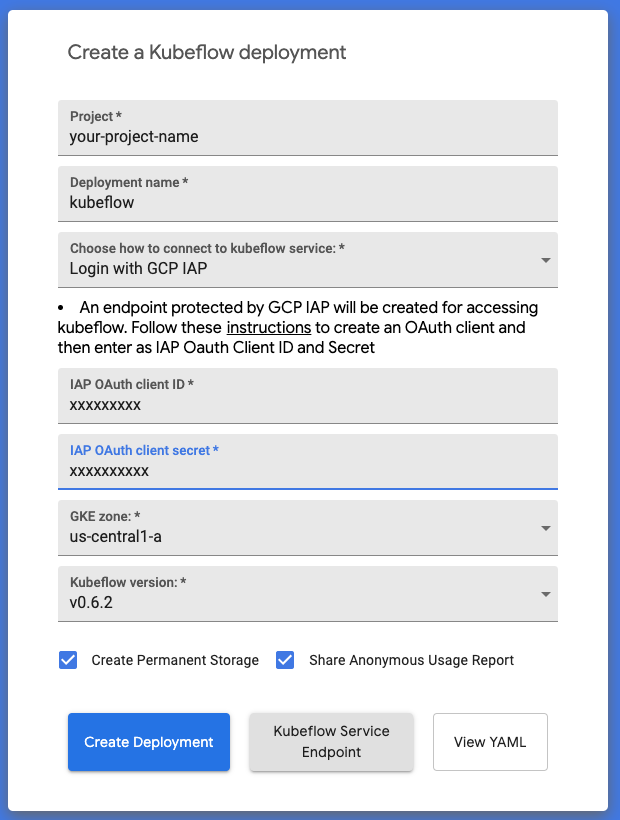Remote deployment of Kubeflow Pipelines
If you’ve used Kubeflow, you may know that its Jupyter notebooks installation makes it easy to deploy a Kubeflow Pipeline directly from a notebook, using the Pipelines SDK. This notebook, and other samples, show examples of how you can do that. The Pipelines Dashboard, which is part of the Kubeflow Dashboard, makes it easy to upload and run pipelines as well.
Sometimes, though, you want to deploy a Kubeflow Pipeline remotely, from outside the Kubeflow cluster. Maybe you want to do this via execution of a command-line script on your local laptop; or from a VM that’s outside the Kubeflow cluster (like the AI Platform notebooks); or from services like Cloud Run, or Cloud Functions (which let you support event-triggered pipelines until that feature is available natively).
Remote deployment works well, but to implement it, you need to do a bit more setup to create the client connection to Kubeflow Pipelines than you would if you were connecting from within the same Kubeflow cluster.
For example, the Kubeflow ‘click-to-deploy’ web app, which makes it easy to install Kubeflow on GKE, includes the option to set up a Cloud Identity-Aware Proxy (IAP)-enabled cluster. Connecting remotely to an IAP-enabled cluster requires configuring and using a service account with the correct permissions.

Creating an IAP-enabled Kubeflow installation on GKE using the click-to-deploy web app.
I’ve created a series of notebooks that walk through how to do the necessary setup for remote deployment in three different contexts:
-
kfp_remote_deploy-IAP.ipynb shows how to do remote Pipelines deployment to an IAP-enabled Kubeflow installation (on GKE).
-
gcf_kfp_trigger.ipynb gives an example of how you can use GCF (Cloud Functions) to support event-triggering of a Pipeline deployment. The example shows the GCF function being triggered by the addition or update of a GCS (Google Cloud Storage) object, but there are many other GCF triggers that you can use.
-
kfp_remote_deploy-port-forward.ipynb walks through how to connect via port-forwarding to the cluster.
Note: port-forwarding is discouraged in a production context.
Using Cloud Function triggers
The use of Cloud Functions to trigger a pipeline deployment opens up many possibilities for supporting event-triggered pipelines. For example, you might want to automatically kick off an ML training pipeline run once an AI Platform Data Labeling Service “export” finishes. There are multiple ways that you could use GCF to do this. You probably don’t want to set up a GCF trigger on the export GCS bucket itself, as that would trigger too many times.
However, you could write a GCS file to a ‘trigger bucket’ upon completion of the export process, that contains information about the path of the exported files. A GCF function defined to trigger on that bucket could read the file contents and use the info about the export path as a param when calling run_pipeline().
The gcf_kfp_trigger.ipynb notebook includes an example of how you could set up something along these lines.
Summary
In this article, I talked about several different ways that you can access the Pipelines API, and remotely deploy pipelines, from outside your Kubeflow cluster– including via AI Platform Notebooks, Google Cloud Functions, and running on your local machine. Google Cloud Functions provides a straightforward foundation for supporting many types of event-triggered pipelines, and the GCF notebook shows an example of one way that you could automatically launch a pipeline run on new data after doing an export of Data Labeling Service results.
Give these notebooks a try, and let us know what you think!